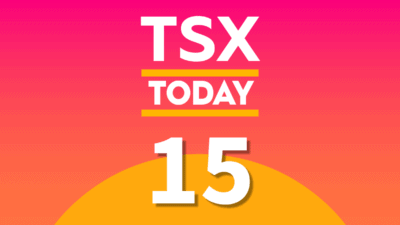The stock market crash might have a silver lining for Canadian retirees who receive Old Age Security (OAS) pensions and worry about the CRA clawback.
Pension recovery tax
The CRA implements a pension recovery tax on OAS payments once net world income breaks above a minimum threshold. The amount for the 2020 tax year is $79,054. Every dollar of income above that level up to $128,137 triggers a 15% OAS clawback. At the maximum threshold, the full OAS pension payments would be subject to the CRA recovery tax.
Income from company pensions, CPP, OAS, and RRIF payments all count toward the net world income total. The CRA also adds income from investments held in taxable accounts. Earnings from side gigs get rolled in, as well, so it doesn’t take long for a retiree to bump up against the minimum threshold.
One way to increase income without worrying about the OAS clawback is to generate it inside a TFSA. The maximum cumulative TFSA contribution space is up to $69,500 per person. That gives couples as much as $139,000 in investment space that can be used to create a tax-free income stream.
Opportunity
The crash in the stock market is driving down the share prices of many of Canada’s leading dividend stocks. These are industry leaders with strong balance sheets and reliable payouts that should continue to grow. The dip in the stock prices is pushing yields up to attractive levels.
Let’s take a look at one stock that might be an interesting dividend pick today to start a balanced TFSA income fund.
BCE
BCE is Canada’s leading communications service provider with mobile and wireline networks across the country. The infrastructure provides phone, internet, and TV subscribers with state-of-the-art broadband capability to enable the efficient operations of personal lives and company activities.
BCE invests billion of dollars to upgrade the network. The fibre-to-the-premises initiative brings fibre-optic connectivity right to the doors of its customers. The investment protects BCE’s wide moat while providing customers with the broadband capacity they desire.
The government wants to drive down mobile phone bills. The coronavirus crisis could step up the pressure on the communications companies to do their part in helping Canadians get through the tough times. The result could be a negative impact on near-term mobile revenue.
In addition, BCE’s media division could take a hit. The professional sports leagues are on hold and advertising revenue could slip as companies move to cut expenses.
BCE has options to increase revenue
The evolution of technology is boosting demand for remote monitoring and security services. This provides BCE with options to increase revenue from existing clients.
Falling interest rates and declining bond yields are good news for BCE and its shareholders. Cheaper borrowing costs on funds used for the capital programs should free up more cash for distributions. BCE raised the dividend by 5% in 2020 and ongoing hikes should be in line with growth in free cash flow.
The stock price is down to $53 from $65 just four weeks ago. This puts the current dividend yield at 6.25%.
The bottom line
BCE’s dividend should be safe and the stock appears oversold. The TSX Index is home to many top dividend stocks that appear very cheap right now and getting an average 6% is possible on a portfolio of these stocks.
At a 6% yield, a retiree could earn $4,170 per year on a $69,500 TFSA fund. A couple could generate $8,340. That would be $695 per month in tax-free income that wouldn’t put OAS pension payments at risk.







